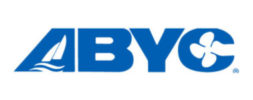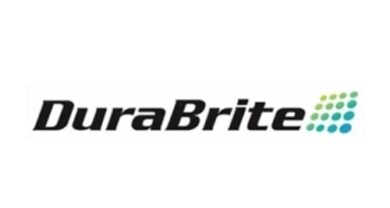Focused ambitions
Marinco Electrical Group knows the importance of customer research. And the company — a supplier to the marine, RV, stage/theater and industrial markets — is using it to drive change throughout its organization.
Two years ago, Marinco invited 15 yacht club members from Northern California to dinner and some frank conversation. This group was carefully selected based on the size of their boats, their ages and their boating lifestyles. And open-ended questions were posed to the group using an “active listening” approach in which each answer is qualified through follow-up questions.
“It’s a grassroots approach,” says Ann Mitchell, Marinco’s director of marketing communications. “In the boating industry, I think that’s the best way to get feedback and information.”
Out of this focus group and others came a long “to do” list that the company ranked according to priority during a September 2007 management retreat, explains Mitchell.
A new Web
Floating to the top of the list was a redesign of Marinco’s Web site, which Mitchell has led over the past year.
The updated site, launched in July, incorporates several suggestions that came out of the focus groups, such as organizing products by industry served; never being more than three clicks away from a product; an “ask the experts” section in which visitors can ask questions of electrical experts, share information with other visitors and browse a library of how-to articles; and downloadable catalogs, manuals, spec sheets and warranty information.
“What we learned in the focus groups is that boaters are primarily using the Web to understand and define the product they’re looking for,” says Mitchell. “If they don’t find what they’re looking for quick and easy, they’ll go somewhere else.”
The “they” to which Mitchell refers includes more than just the boater, however. Marinco also wanted the site to serve its employees, sales reps, dealers, distributors, OEMs and the media. So, Mitchell went to work researching the Web sites of other companies inside and outside the industry. She focused specifically on those that, like Marinco, worked in a variety of industries and served multiple stops along the supply chain.
In addition, she used feedback on the needs of the company’s dealer customers obtained during a January meeting with its outside sales reps to further develop the site. For example, it now includes a password-protected “Reseller Center,” which offers downloadable brand logos, merchandising tools, retail header signs and educational product charts. Not only does the password serve to organize the site’s information by user, but it allows Marinco to track how its site is being used and by whom, helping it better communicate with its dealer network.
The Web site also features a “Support Center,” including answers to frequently asked questions, installation manuals, specification sheets, warranty information and wire tech-data.
Education on display
During that January sales rep meeting, Marinco also learned that dealers were looking for ways to better and more simply educate their customers about its products.
“And who better to do it than those who are manufacturing the products,” says Mitchell.
Using that information — and the merchandising strength of its Ancor line of electrical products — Marinco went to work designing a new line-up of store displays and merchandising tools to help dealers better turn and manage their inventory, from its AFI wipers, horns and fishing accessories to its BEP Marine DC power management products, its Guest trolling motor battery chargers and its Marinco cordsets, adapters and inlets.
Again, Mitchell did her research, visiting Home Depot, Target, Wal-Mart, Kohl’s as well as dealerships to look at how products are displayed on their shelves and find new merchandising ideas.
Among the strategies the company adopted was color-coding to help consumers differentiate between different types of products, charts to help customers determine compatibility and therefore make quick buying decisions, and less technical terminology. For example, its horn decibel chart shows pictures of its products organized by “loud,” “louder,” and “loudest” to help consumers easily determine the best product for their boat.
“Now, we’re their silent salesperson,” explains Mitchell. “This is the most critical time to support our dealers, distributors and retailers. We need to prove to our customers that we’re there for them by helping them sell better and more.”
Tips for Focus Group Success
Boating Industry magazine interviewed Wanda Kenton Smith, president of Kenton Smith Advertising & Public Relations, who has conducted and moderated several focus groups for marine industry manufacturers and associations, on when and how to run a focus group. Here is her advice:
Boating Industry (BI): When should a company consider using a focus group?
Wanda Kenton Smith (WKS): The time to use a qualitative focus group is when you want and really need unbiased, objective feedback on an important consideration for your organization. The goal is to hear from existing or prospective customers of your product and/or service to get their perception on whatever it is you are considering. As it relates to consumer evaluations of new products, focus groups are particularly useful for determining the best and worst aspects of a product.
BI: Is setting up a focus group difficult or expensive?
WKS: Setting it up isn’t difficult, per se, but it is time consuming to do it right. If you have a skilled moderator in-house who already understands the issues, it can be very cost efficient and effective. If you don’t have this resource, you will need to hire someone for this critical role — an outside marketing consultant or a marketing research firm. As to the expense, there is no standard cost as there are many variables in play. Will you be conducting a simple in-house forum or will you need to develop multiple focus groups in different regions of the country? Will you host it in your conference room, rent a hotel meeting room, or rent a dedicated space exclusively set up for focus group activity that includes video or audio taping services, TV remotes, or privacy one-way mirrors where company executives can observe the entire event? Will you reimburse participants for travel, meal and parking costs? Are materials and outside stimuli needed to be produced as part of the focus group discussion? What type of post-event report do you desire? All of these components, and others, add to the cost factor of conducting focus group research.
BI: What should I look for in a moderator?
WKS: You need an experienced and trained moderator who is educated on the issues and fully prepared to lead the focus group discussion. The moderator must be briefed by the company, and then be well prepared to develop a moderator guide for usage while conducting the focus group activity. The moderator needs to understand the goals and objectives of the exercise. The moderator must be prepared to address open-ended questions within a group setting, while also being able to delve into relevant subjects that may emerge. The moderator must be able to not only communicate effectively, but also be able to handle group dynamics and flow, such as dealing with dominant personalities, or in tapping the less forthcoming within the group.
BI: How should I find participants?
WKS: Refer to your own list of customers and prospects. Avoid “friends” and pairing people up who know one another already as that can create a sense of intimidation within the group. You can pull from targeted databases, conduct some initial phone screening, send out some questionnaires and also ask for referrals for candidates that meet your criteria. The group should reflect a representative sampling of customers or prospects who meet the targeted demographic of the product or service under study. If you fail to get a qualified group of participants, you will fail to get valid results. The mix may include existing customers who have previously purchased similar products, and/or customers who have purchased from your direct competition. It may include targeted prospects that have inquired and requested information. If you have a mixed gender audience, make sure to get male and female participants. You may choose to conduct multiple focus groups, depending on the scope and reach of your project. The size of the group is an important consideration. Most focus groups will range between eight and 10 participants, though some may go up to 12. I personally prefer a smaller group of eight as it is easier to control the flow of conversation and to allow sufficient time to probe as necessary.




